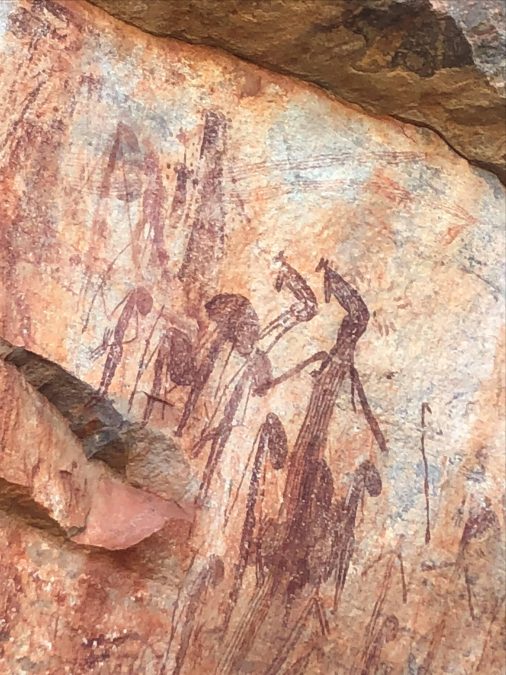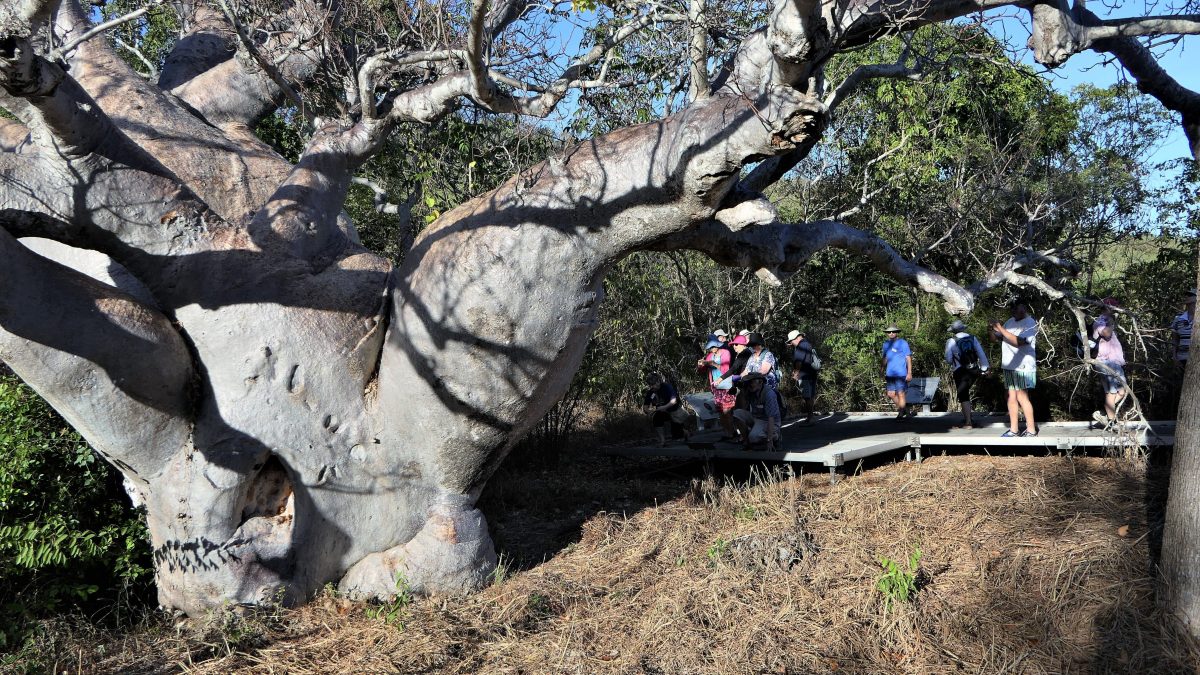It’s a coincidence that despite being named after a commissioner of NSW, Bigge Island lives up to its name. It is 178km² and the second largest island in the Bonaparte Archipelago (which formed of hundreds of islands and islets). ‘Wuyurru’ to the Uunguu people, the island is surrounded by very shallow reefs which makes it hazardous for cruise ships to anchor. Instead, Kimberley cruise ships ferry their passengers to shore, all of whom are eager to see the abundance of Aboriginal rock art, wildlife and caves.
Wary Bay is a valuable source of Gwion Gwion and Wandjina artwork which is found on cliffs and cave walls. At times you will have to crouch low to see the artwork as it is tucked-up inside crevices.
The landscape of Bigge Island is typical of outback Australia. Rugged rocks, weathered sandstone, volcanic rock and quartz all mix into varying degrees of red. Fortunately, this landscape coupled with the fact that there are no predators makes Wuyurru the home of many rare mammals, including the Monjon (rock wallaby), Northern Quoll and the Ilangnalya (scaly-tailed possum). Wildlife lovers will enjoy trying to spot these shy Aussie icons.
Many itineraries marry a trip to Bigge Island with Careening Bay, named after historical events back in 1820. It was at this time that Lieutenant Phillip Parker King, on his third trip charting the coast of Western Australia, got into trouble. His cutter The Mermaid began taking on water and drastic action was required. Waiting for the right tidal conditions, Parker King landed her on the beach. Hence the nautical name, careening means “to put (a ship or boat) on a beach especially in order to clean, caulk, or repair the hull.” (Yes, I admit I didn’t actually know that word until I visited the beach).
Fortunately for Parker King there were those less fortunate before him and so the crew were able to salvage metal from nearby shipwrecks, melted it down and were able to make repairs. During the ten days that it took to complete the maintenance, the ship’s carpenter visited the local Boab tree and carved ‘HMC Mermaid 1820’ into the trunk. Nearly 200-years later, the lettering has grown to 12m high and is a big tourist attraction. The Boab, a distinctive tree with a fat trunk and few leaves, was evidently as much a pull to visitors in days-gone-by as there is also an old Makassan Islamic prayer alcove at the rear of the tree.

About Jenny
I’m an expert in small ship cruising in the Kimberley and have completed four cruises on different vessels along this spectacular coastline. With a family I now work part-time so if you would like to have a chat with me about Kimberley cruising at a time that suits you book in a call here and I will call you then.
Cruises in the Kimberley are not ‘one size fits all’ scenario; there are different ships and itineraries each offering their own special elements. If you would like some general information to start your research then download my free guide to Kimberley cruising here. I have also written some really interesting blogs (if I do say so myself) click here to have read.
Here are a few of the most popular ones.
Book your no obligation 20 minute discovery call with our Kimberley cruise expert.
Book a time and date that works in with your schedule and we will call you. Let us discover together the right Kimberley Cruise for YOU.



